5 mythical creatures shown in god of war video game Part-2
Cerberus, Siren, Harpy, Gorgon, basilisk
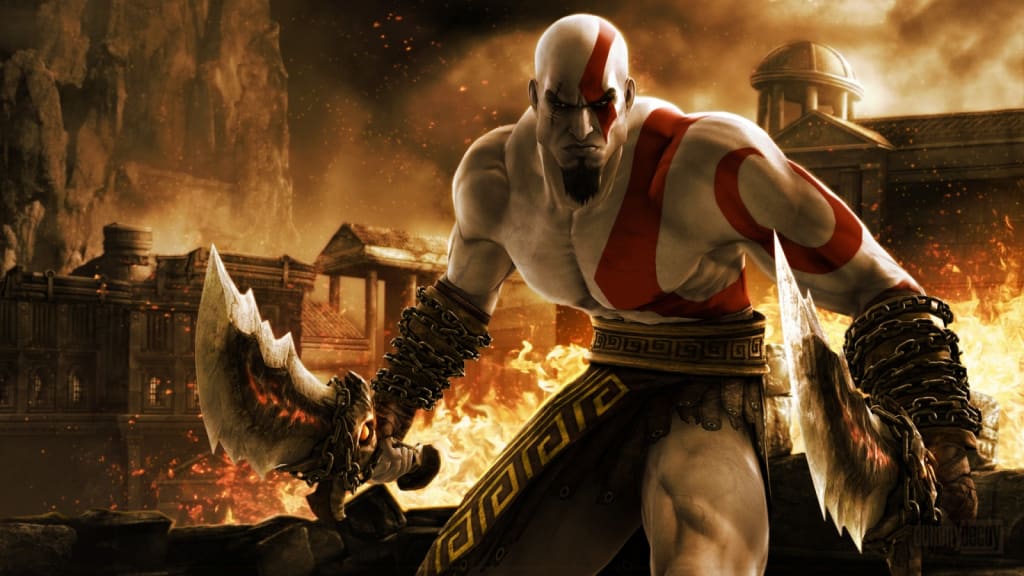
1., Cerberus:
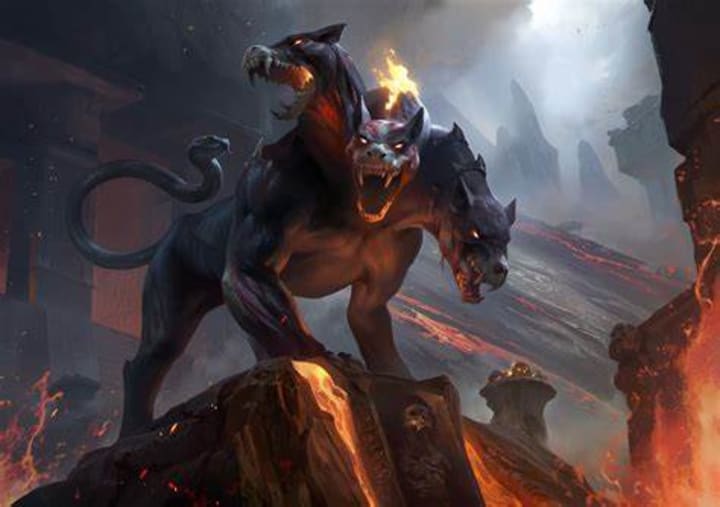
Cerberus is a creature from Greek mythology that is often depicted as a three-headed dog with a snake for a tail. The name "Cerberus" means "spotted" or "variegated," and he is known as the guardian of the underworld.
According to the myth, Cerberus was the offspring of the monsters Echidna and Typhon. He was born with three heads, razor-sharp teeth, and a serpentine tail. His job was to guard the entrance to the underworld, preventing the souls of the dead from escaping and keeping living mortals from entering.
The twelfth labor of the hero Heracles (also known as Hercules) was to capture Cerberus and bring him to the world above. Heracles was ordered to perform this task by King Eurystheus, who had been set the task as a punishment for killing his own children in a fit of madness.
To capture Cerberus, Heracles went to the underworld and found the entrance guarded by the three-headed dog. He subdued Cerberus with his incredible strength and dragged him back to the world above, presenting him to King Eurystheus.
After showing Cerberus to Eurystheus, Heracles released him back into the underworld, where he resumed his role as guardian of the entrance. The myth says that Cerberus remained in the underworld until the end of time, guarding the realm of the dead.
Cerberus has appeared in various works of art and literature over the centuries, including in Dante's Inferno and in the video game series God of War. He is often seen as a symbol of death and the afterlife, and as a fierce and powerful creature that cannot be tamed.
2., Siren:
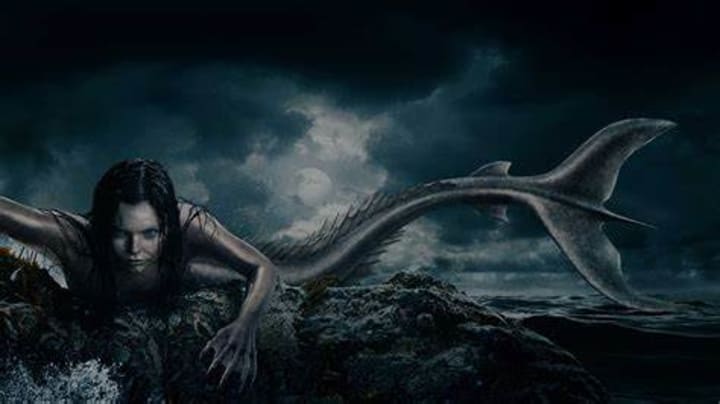
In Greek mythology, Sirens were sea nymphs who lived on the island of Anthemoessa. They were often depicted as beautiful women with the wings and talons of birds. According to legend, they would lure sailors to their deaths with their enchanting songs and seductive voices.
The story of the Sirens is often linked with that of the hero Odysseus. In Homer's epic poem "The Odyssey," Odysseus and his men encounter the Sirens while sailing home from the Trojan War. The Sirens' song was so alluring that sailors who heard it would be drawn towards the island and crash their ships on the rocks. Odysseus, however, was forewarned about the danger of the Sirens by the goddess Circe. He ordered his men to plug their ears with wax and tie him to the mast of the ship so that he could hear the song without being lured to his death.
There are many variations of the Siren myth. Some stories say that the Sirens were once handmaidens of the goddess Persephone, but were transformed into monsters by the goddess Demeter when Persephone was abducted by Hades. Others say that the Sirens were originally cursed by the goddess Aphrodite for failing to help her when she was in trouble.
Despite their dangerous reputation, the Sirens were sometimes depicted as beneficent figures who helped sailors by warning them of approaching storms and other hazards at sea. In later mythology, the Sirens were sometimes identified with the Muses, the goddesses of music, poetry, and the arts.
The Sirens have continued to be a popular theme in art, literature, and music. They have been portrayed in numerous paintings, sculptures, and other works of art, as well as in plays, poems, and novels. In modern times, the term "siren song" has come to mean any irresistible temptation or lure.
3., Harpy:
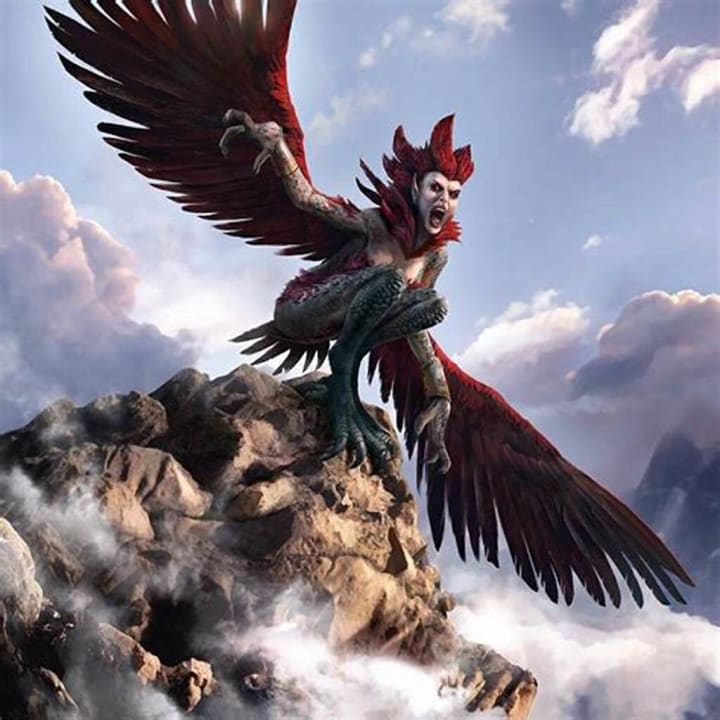
In Greek mythology, the Harpies were creatures with the head of a woman and the body of a bird. They were often depicted as fierce and terrifying, with sharp claws and a menacing appearance. According to legend, they were sent by the gods to punish mortals for their transgressions.
The name "Harpy" comes from the Greek word "harpuia," which means "snatcher." This is because the Harpies were known for swooping down from the sky to snatch food, particularly from people who had offended the gods.
In some versions of the myth, the Harpies were the daughters of the sea god Thaumas and the nymph Electra. In others, they were born from the blood of the giant Typhon when he was slain by the god Zeus. The Harpies were often associated with the god of the underworld, Hades, and were sometimes said to act as his henchmen.
The most famous story involving the Harpies is that of King Phineus. According to legend, Phineus was a king who had offended the gods by revealing their secrets to mortals. As punishment, the Harpies were sent to torment him, swooping down to snatch his food and causing him to starve.
The hero Jason and his crew, on their quest for the Golden Fleece, encountered Phineus and decided to help him. They set a trap for the Harpies and captured them, forcing them to swear an oath to leave Phineus alone forever. In some versions of the myth, the Harpies were later released by the god Zeus and allowed to return to their role as punishers of mortals.
The Harpies have been a popular theme in art and literature throughout the centuries. They have been depicted in numerous paintings, sculptures, and other works of art, as well as in plays, poems, and novels. In modern times, the term "harpy" is sometimes used to describe a predatory woman or a shrewish, nagging wife.
4., Gorgon:
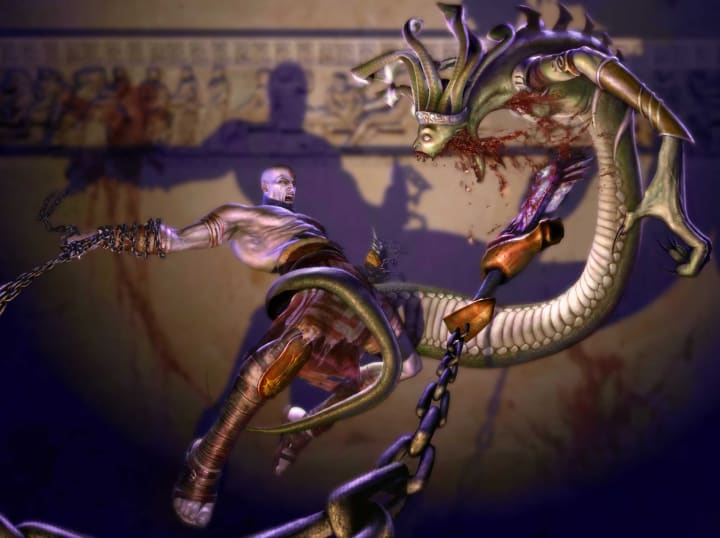
In Greek mythology, the Gorgons were a group of female creatures with snakes for hair and the ability to turn people to stone with their gaze. The most famous of the Gorgons was Medusa, who was said to be the only one who was mortal.
According to legend, the Gorgons were the daughters of the sea god Phorcys and the sea goddess Ceto. They were known for their terrifying appearance and their ability to turn anyone who looked at them to stone. Their hair was made of writhing snakes, and they had large, powerful wings and sharp claws.
Medusa, the most famous of the Gorgons, was said to be a beautiful woman who caught the eye of the god Poseidon. Poseidon seduced her in the temple of the goddess Athena, which angered Athena. In her anger, Athena turned Medusa's hair into snakes and cursed her so that anyone who looked at her would turn to stone.
Medusa was eventually killed by the hero Perseus, who was tasked with slaying her as one of his quests. With the help of the gods, Perseus was able to decapitate Medusa without looking directly at her, using the reflection in his shield to guide his sword.
In some versions of the myth, the blood of the Gorgon had magical properties, and it was said to have the power to heal or even bring the dead back to life. Medusa's head was said to have been kept by Perseus, who used it as a weapon and as a means of turning his enemies to stone.
The Gorgons have been a popular theme in art and literature for centuries. They have been depicted in numerous paintings, sculptures, and other works of art, as well as in plays, poems, and novels. The image of Medusa in particular has been used as a symbol of female power and as a warning against temptation and lust.
5., Basilisk:

The basilisk is a legendary creature from European folklore. It is typically depicted as a serpent or dragon with the power to kill with its gaze or breath.
According to legend, the basilisk was born from the egg of a rooster that had been incubated by a serpent or toad. It was said to have a lethal gaze that could kill anyone who looked at it directly, and its breath was also said to be poisonous. Its body was covered in scales that were impenetrable, except for one weak spot on its belly.
The basilisk was feared as a powerful and deadly creature, and many believed that its very presence could cause disease and death. Its reputation grew even more terrifying in the Middle Ages, when it was believed to be the king of the serpents and the embodiment of evil.
In some accounts, the only way to kill a basilisk was to have it see its own reflection, which would cause it to die from fear. This belief led to the creation of mirrors that were specifically designed to reflect the image of a basilisk.
The basilisk has been a popular theme in art and literature for centuries. It has been depicted in numerous paintings, sculptures, and other works of art, as well as in plays, poems, and novels. It is often used as a symbol of danger and fear, and as a warning against the dangers of vanity and pride.
In modern times, the basilisk has also become a popular creature in fantasy and science fiction. It has been featured in numerous books, movies, and video games, often as a powerful and deadly monster that must be defeated by the hero of the story.
About the Creator
Enjoyed the story? Support the Creator.
Subscribe for free to receive all their stories in your feed. You could also pledge your support or give them a one-off tip, letting them know you appreciate their work.






Comments (1)
In my opinion this game is brilliant. I love playing because this game is really great. If you are looking for a place to buy this game cheaply, I highly recommend this website: https://royalcdkeys.com/products/god-of-war-steam-cd-key